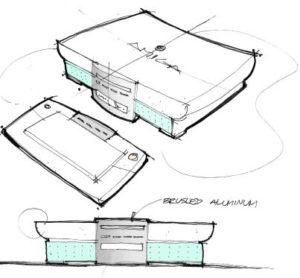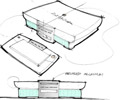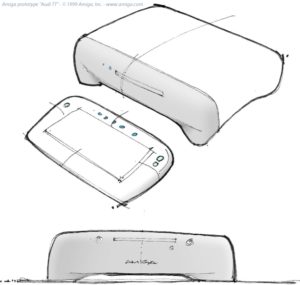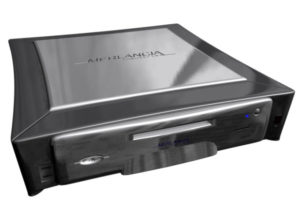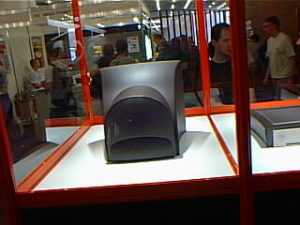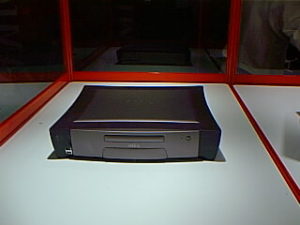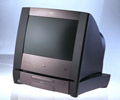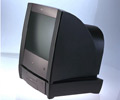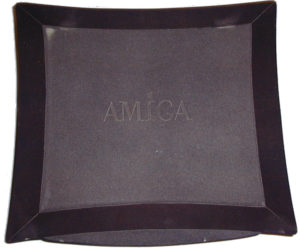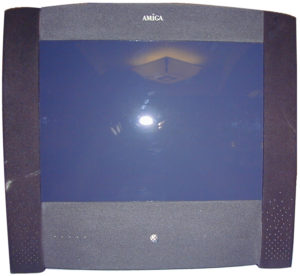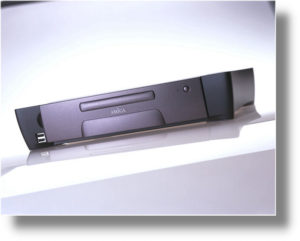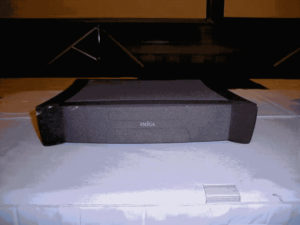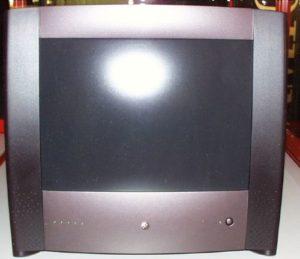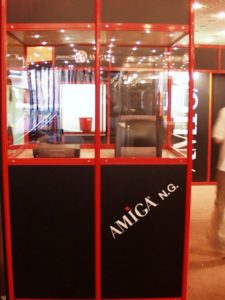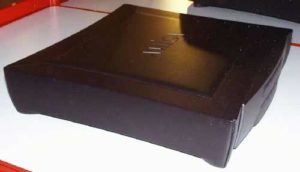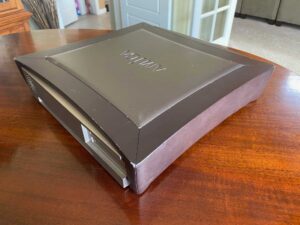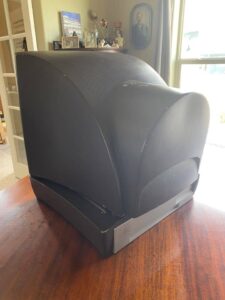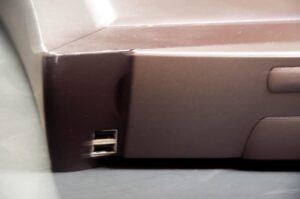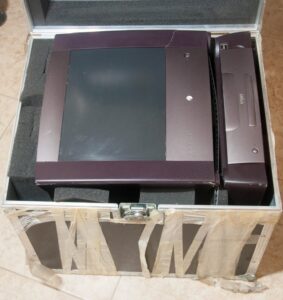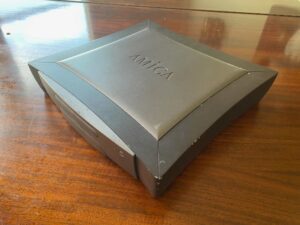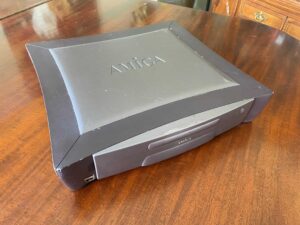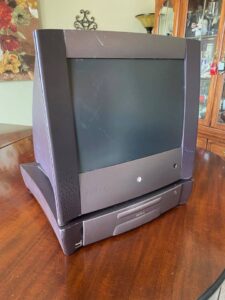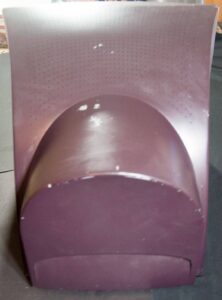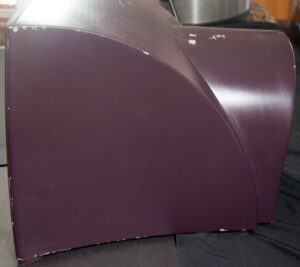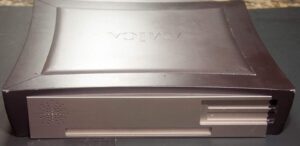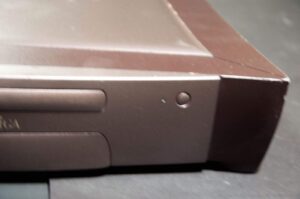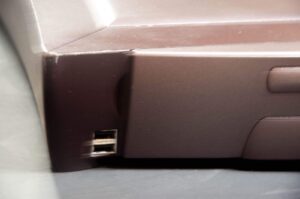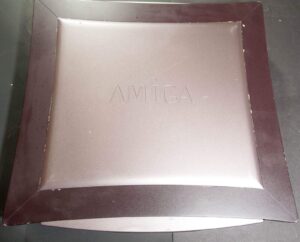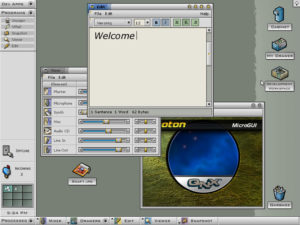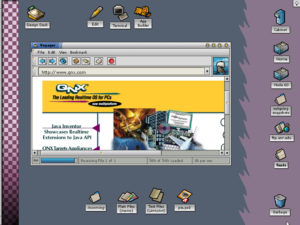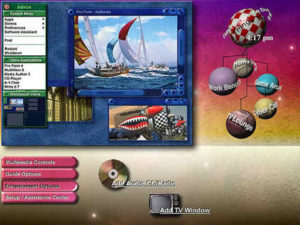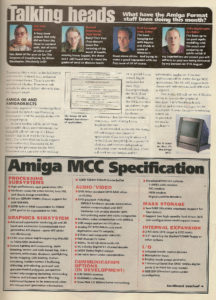Introduction
From Amiga Inc website in 1999. “The Amiga Multimedia Convergence Computer (Amiga MCC) - a hardware/software platform specifically designed to meld outstanding multimedia performance, a new level of ease of use, transparent access to the Internet and, through home networking, access to a growing family of Amiga-compatible devices around the home. The Amiga MCC was to be distributed in two formats: an integrated multimedia convergence computer, and a standard ATX motherboard. Both would have included the Amiga OE, an underlying OS, and support for digital video/DVD, 3D graphics, surround sound, and emerging broadband and home networking standards. The Amiga MCC was intended to serve as both a great platform for multimedia applications such as 3D gaming and digital video integration, and as the hub for a next-generation distributed home computing environment.”
Back in 1997, the Amiga had just been sold to a new and upcoming company, Gateway 2000, a PC manufacture that was close to becoming number one above Dell or HP, it wasn't all that clear as to why Gateway bought the Amiga back in 1997, rumours suggested that just because Dell took an interest, Gateway bought it. It later became apparent the main interest was the patent, however they were surprised to get a very active community with it. After a year of pretty much nothing done with the Amiga, Gateway decided they could perhaps use the brand to launch a new internet, multimedia set top box systems a market that was getting more and more interest as the world connected up to the world wide web. From 1998 to the end of 1999 the project ran, partnerships were made with QNX to develop the new OS and new hardware was planned. Unfortunately the idea was scrapped and another potential Amiga rival passed by. The rest of this page is dedicated to covering what we know of the project. The AmigaMCC particularly interest me as I always like the idea, the goal and the design of the computer.
The Design
One thing I believe Gateway did right with the Amiga was try something a bit different to the standard computer and follow Apples nod with the recent success of the iMac proved the design of the case/computer does matter. To this end Gateway contacted Pentagram Design to draw up a number of concepts for the new Amiga.
Below is some concepts picture and later 3d models based on the actual design
In the end, the design they picked seem like a game console mix with a DVD player style. This annoyed some people as it didn't really keep any design cues from the classic Amiga designs and that it looked like a simple DVD player. I personally think there is some nice curve work here and if you look at the market of HTPC at the time and even up to today the design I feel has lasted the test of time, below is the largest collection of AmigaMCC picture on the net (as I was a one of the few who was a big fan of the design).
I have also made a 3d model in Google SketchUp program, which you can viewed and download here
The Operating System
Known as AmigaSoft, Amiga OE and AmigaObject was to be the new OS that powered the Amiga, rather than base it on the classic AmigaOS, it was decided early to adopt a new more modern kernel to power the OS, QNX was selected for it multimedia capability, real time performance and multitasking ability. Amiga community largely supported the move and got excited about the possibility with a QNX OS. Gateway would add a lot of their own features to the OS and of course include some kind of emulation support into the OS to support classic Amiga software titles, it believed that the work they did on this later became AmigaOS XL a emulator package that was release in 2001 that ran on top of the QNX OS. In June of 99 QNX showed off what they had done to the Amiga community, screen shots below.
However just a week later it was announced that QNX had been dropped in favour of Linux which was growing support very quickly in the industry and more of future could be seen working with a Linux Kernel rather than a obscure kernel, however the community didn't like the idea of the Amiga just becoming another linux distributed OS with Amiga branding. There was little reason to be worried as soon after Gateway cancelled their Amiga plans altogether and sold the rights of Amiga to Amino at the end of 1999.
What might have been?
At the end of 1999 Gateway decided to sell the Amiga brand to Amino a new company set up by Bill and Fleecy ex-employees of Gateway. What became of the work done in Amiga became Gateway Touch Pad, a Internet appliance device that featured a 10 inch touch screen and featured a transmeta cpu. It ran a custom version of a lite Linux OS with Aol GUI design. This is to believed to be what the type of device Amiga might have been powering. It launched in November 2000 for $600 but it failed to meet expectation and ended production a year later, more information can be found at these links
https://www.zdnet.com/article/gateway-connected-touch-pad/
http://en.wikipedia.org/wiki/Gateway_Touch_Pad
https://web.archive.org/web/20070520174018/http://www.transmetazone.com/articleview.cfm?articleID=552
Links
http://www.bambi-amiga.co.uk/amigahistory/amigamcc.html - Amiga history Amiga MCC
https://amigang.com/amigamcc-build-htpc-mod/ - My Amiga MCC Build
Further Reading
Below are some scans from Amiga magazine coverage of the new Amiga. There was more published in these mags and across many issues, so if you can get hold of old Amiga mags from summer of 1999, you can find out more about the planned machine.
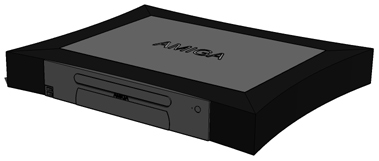
Details
Project Started: May 1998
Project ended: November 1999
Developed by: Gateway 2000
Specs
CPU: Transmeta we think
GFX: ATI Unknown graphics card 32mb
Ram: 32mb
Mpeg Decoder and TV output
4x USB 1.1 ports
10Gb Hard Drive
DVD-Rom
5.1 channel Audio
Custom montior 15in CRT
Custom Case
keyboard and mouse
Price: £500?

